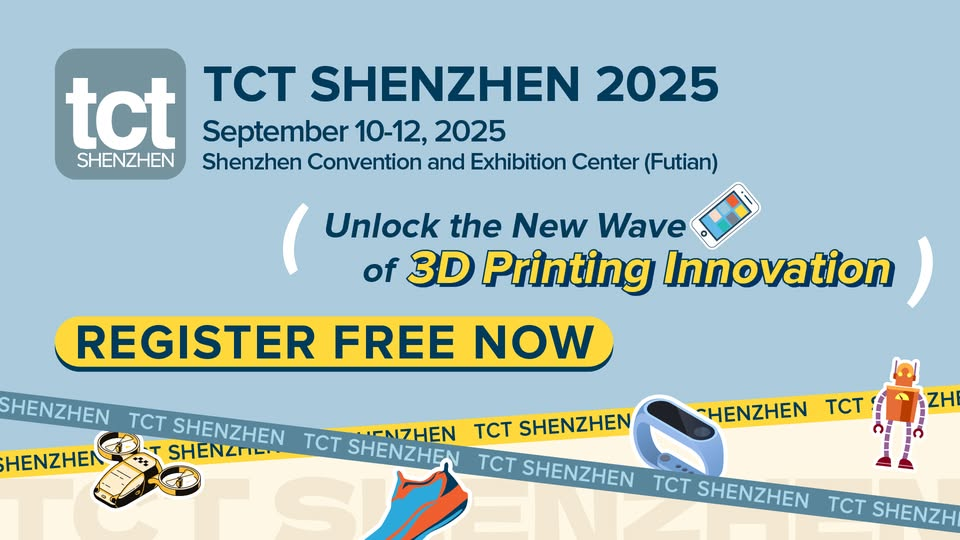
The landscape of 3D printing continues to evolve, with desktop 3D printing and industrial 3D printing playing distinct but complementary roles. While industrial 3D printers dominate large-scale manufacturing with high precision and advanced material capabilities, desktop 3D printers are becoming increasingly powerful, affordable, and versatile.
As we move towards 2025, desktop 3D printing is undergoing significant advancements, making it more competitive with industrial systems. Additionally, China’s desktop 3D printer manufacturers are driving global market expansion, with export volumes surging. According to China’s General Administration of Customs, 3D printer exports increased by 32.8% in 2024, with desktop 3D printers leading the growth. TCT Asia 2025 will be a key event showcasing these advancements, further pushing the boundaries of desktop 3D printing in the global market.
As 3D printing technology advances, the gap between desktop 3D printers and industrial 3D printers continues to evolve. While both serve critical roles in the industry, they differ significantly in terms of technical features, material compatibility, cost, and applications. Understanding these differences helps businesses and individuals choose the right solution for their specific needs.
1. Technical Features
2. Materials and Printing Capabilities
3. Cost and Application Scenarios
4. Ease of Use and Maintenance
As desktop 3D printing continues to mature, several key trends are set to shape its development in 2025. These advancements will make desktop 3D printers more powerful, accessible, and competitive, driving broader adoption across industries.
1. Performance Enhancements
Modern desktop 3D printers are closing the gap with industrial machines by integrating faster print speeds, higher resolution, and improved stability.
2. Material Diversity and Sustainability
The expansion of desktop metal 3D printers and composite 3D desktop metal printers is enabling stronger and more functional end-use parts. Meanwhile, sustainability efforts are driving innovations in recyclable and biodegradable materials.
3. Expanding Market Demand
With growing adoption across education, small businesses, and rapid prototyping, desktop 3D printers are expected to reach a broader audience.
4. Cost and Affordability Improvements
Advancements in desktop metal 3D printing and resin printing are making high-quality printing more affordable.
5. Ecosystem and Software Optimization
Enhanced slicing software, AI-driven print optimizations, and cloud-based remote monitoring are making desktop 3D printing more efficient and user-friendly.
The distinction between desktop and industrial 3D printing is becoming less clear as desktop 3D printers gain industrial-grade capabilities and industrial 3D printers become more accessible. This convergence is driven by technological advancements, expanding application scenarios, and market synergy, allowing both segments to complement each other in innovative ways.
1. Technological Convergence
2. Cross-Application Scenarios
3. Collaborative Development and Market Synergy
TCT Asia 2025, held from March 17–19 at the NECC (Shanghai), successfully showcased the cutting edge of both desktop and industrial 3D printing. The event drew global attention, particularly highlighting China’s leadership in the desktop 3D printer market, with brands like Creality, Anycubic, and Elegoo debuting their latest innovations.
Key Highlights for Desktop 3D Printing at TCT Asia 2025:
With China maintaining its dominance in the global desktop 3D printer market (94% of global shipments in 2023), the event reinforced the country’s role as both a manufacturing powerhouse and a hub for innovation.
Looking Ahead: TCT Shenzhen 2025 and TCT Asia 2026
Following the success of the Shanghai edition, attention now turns to TCT Shenzhen 2025, scheduled for September 10–12, and TCT Asia 2026, returning to Shanghai in March 2026. Both events will continue to drive dialogue and innovation across the 3D printing industry.
Pre-registration for TCT Shenzhen 2025 is now open: Click here to register and secure your spot at the leading event for additive manufacturing in southern China.
The line between desktop and industrial 3D printing is blurring as technological advancements, market demands, and cross-sector applications drive their evolution. TCT Asia 2025 will be instrumental in showcasing these innovations, shaping the future of desktop 3D printing. Whether you're an industry expert, enthusiast, or business looking to adopt 3D printing, this event will provide valuable insights into the next-generation 3D printing landscape.